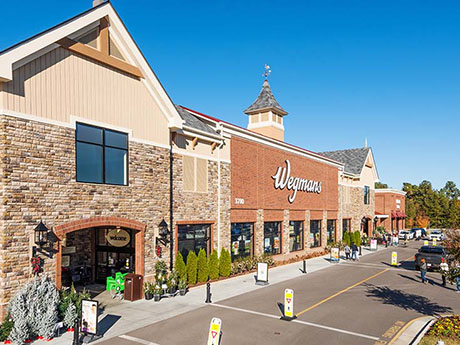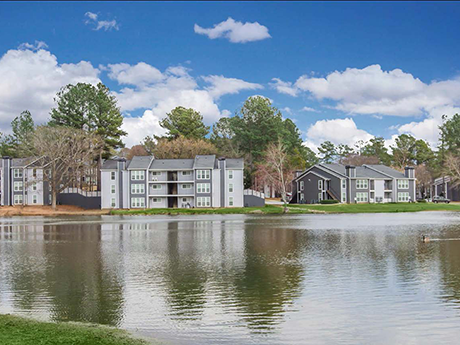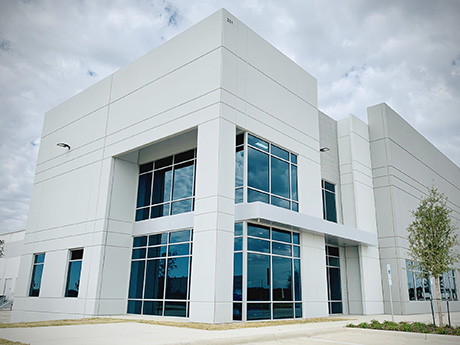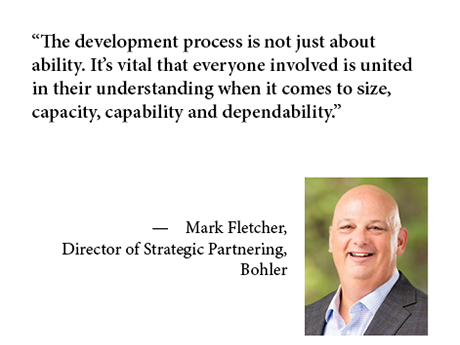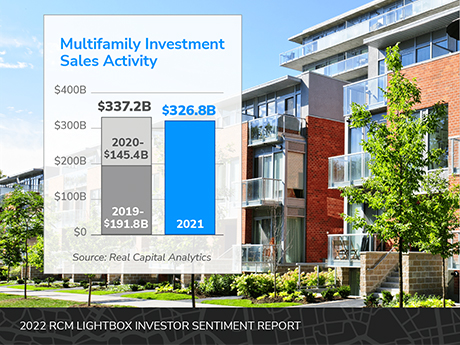Property owners should receive a Notice of Appraised Value from their appraisal district by mid-April. This year, it is imperative that retail property owners submit an assessment protest prior to the deadline and help to establish fair taxable valuations in the post-pandemic marketplace. Since March 2020, COVID-19 has brought uncertainty and ongoing challenges to real estate owners. People often discuss the commercial real estate “winners and losers” of COVID-19, and of the four commercial real estate food groups, retail certainly suffered one of the heaviest initial blows. But how has the property type recovered as the pandemic has evolved? This article explores where exactly retail falls, and then offers strategies to argue more effectively for reduced assessments. Evolving trends To develop a full picture of the current state of shopping centers, one must look back to 2019 and early 2020 before the pandemic. In 2018, approximately 5,800 retail stores closed nationwide and only 3,200 opened, for an overall deficit of 2,600 locations. In 2019, the size of the annual store deficit nearly doubled with 5,000 more closures than openings. E-commerce sales volume rose steadily from 2010 through 2019, which, coupled with accelerating physical store closures, clearly indicate a slowdown in …
Features
By Steve Firestone, Crown Bay Group Why would anyone choose investing in an aging workforce housing property over razing it to make room for Class A apartments? Are these challenging properties worth the risk? Making this choice may not be right for everyone, but the returns can be unbelievably rewarding. The secret recipe for transforming Class B and C properties to benefit the community, local residents and your bottom line isn’t complicated. The key is entering into each deal with a genuine interest and desire to do what is right and what matters to the residents who call this property home. The age-old saying — by doing good, you will do well — still holds true today. There is an overwhelming demand for Class B and C assets. While a large portion of new development over the past decade has been Class A luxury, the Class A market makes up only 20 percent of the total rental market. New construction of affordable, market-rate units is just not financially feasible today. Consequently, meaningful workforce supply has rarely been added this past decade. Despite the pervasive need for workforce housing, the supply has decreased with older units being demolished to make room …
SANTA BARBARA, CALIF. — The national average for in-place industrial rents across the top 30 U.S. markets reached $6.45 per square foot in February, a 4.4 percent year-over-year increase according to research from CommercialEdge, a product of Yardi Systems. The Santa Barbara-based firm found that the average effective rental rates signed over the same interval was $7.35 per square foot, 90 cents higher than the national average for in-place leases, a nearly 14 percent swing. Southern California markets led the nation in rent expansion, largely due to intense activity in the Ports of Los Angeles and Long Beach. Orange County recorded the most significant 12-month change with a 7 percent hike, reaching $11.65 per square foot. Los Angeles (6.7 percent) and the Inland Empire (6.5 percent) rounded out the top three markets nationally. On the other end of the spectrum, markets that have higher availability of developable land recorded weaker rent growth in the last 12 months. Newly delivered stock in these markets is helping developers meet demand, while also elevating vacancy levels. Across the top 30 U.S. markets, rent growth was slowest in Charlotte (1.1 percent), Houston (1.7 percent) and Indianapolis (2.3. percent). The spread between the average lease …
By Taylor Williams With the COVID-19 pandemic largely in society’s rearview mirror and warm weather months approaching, Americans are fired up to recoup lost time at their favorite restaurants, bars and entertainment venues. But the collision of this pent-up demand with 40-year inflationary highs means that many consumers are going to be more selective about where they eat, drink and source entertainment. To that end, meals, drinks, games and activities must offer a truly unique experience to justify consumer spending of their stretched dollars and to capture the Holy Grail of repeat spending/visits. That’s not to say that run-of-the-mill, traditional food and beverage (F&B) and entertainment concepts won’t rebound to some extent. But the concepts that deliver their offerings to customers in ways that are truly unique and memorable will be the ones that recognize the strongest sales growth and build the most enduring brand loyalties. Strategies, philosophies and exemplary practices that go into making this endeavor a reality were at the forefront of a panel discussion at the seventh-annual Entertainment Experience Evolution conference that took place in mid-March in Los Angeles. Hosted by Shopping Center Business, the flagship publication of Atlanta-based France Media Inc., the event drew more than …
Where do people go to “get away from it all” — especially when the world shuts down? Many seek relaxation and recreation in the great outdoors. Interest in camping — especially the subset of high-end camping often referred to as “glamorous camping” or “glamping” — grew steadily in the years before the pandemic. The arrival of COVID and the desire for socially distanced vacations created a rapid increase in demand and revenue. The result for commercial real estate has been a large increase in the number of investors interested in outdoor hospitality properties. “Before 2020, the trend was already very strong; the pandemic just accelerated it,” says Sean Wood, associate broker at NAI Outdoor Hospitality Brokers. Wood cites the Kampgrounds of America (KOA) 2021 Annual North American Camping Report: “From 2014 to 2018, there was consistent growth of about 2 million new households per year getting into camping across North America. From 2018 to 2019, we saw a jump from 39.2 million to 41.9 million households that went camping. And then in 2020, we saw an explosion in interest: from 41.9 million households to 48.2 million households camping each year.” The specialists at NAI Outdoor Hospitality Brokers expect this renewed …
When it comes to commercial real estate development, thoughtfully curated teams are critical to success. “It’s important that the extended team works well with each other, so they can deliver results for clients,” explains Mark Fletcher, director of Strategic Partnering at Bohler, a land development design and consulting firm. Developers don’t want to work with a variety of disjointed processes and personalities. They want to work with one team, a multi-discipline team that effectively manages time and resources, focusing on streamlined processes and speed to market. This sort of team unity promotes both cohesiveness and consistency in outcomes. Building a great design and consulting team means having the property developer’s end goals in mind from the very start of the process: dependability, speed to market and turnkey solutions. The importance of fostering cohesion extends to finding an architect to optimize the building and a contractor to strategize materials and phasing. It may be necessary to engage an attorney who can work well with the team to address land use and zoning. Finally, the right site design and consulting firm can streamline communications, maintain timelines and entitlements and keep the project moving forward. Here’s how Bohler’s approach to assembling a team …
Architects Draw the Short Straw with Heavier Workloads, Fluctuating Availability of Construction Materials
by John Nelson
If you know any architects, you may want to check in with them because chances are they’re exhausted from having more work now than ever before, with no end in sight. That’s because despite all the headwinds facing real estate design — namely supply chain disruptions and staffing woes — developers are in growth mode, and architects are needed as they are uniquely equipped to game plan for what users want and need. The volume of work has not only accelerated for architects but they’re also tasked with mapping out new requirements while maximizing flexibility, which is time-consuming and labor-intensive. The workload is getting so substantial that demand is exceeding the supply of architects in some instances. “The backlog is so significant that we are having to contemplate turning away work, which drives us crazy,” says Steve Goggans, principal and architect at SGA | NW, a GF design company. “We are trying to be most responsive to repeat clients, but we may find ourselves unable to produce and perform if we continue to take on work, so we are having to be a little more judicious than we ever have before.” Goggans says that SGA | NW’s logjam is also …
CARLSBAD, CALIF. — Commercial real estate investors are navigating a delicate balancing act as strong demand across many sectors is hitting some headwinds from inflation, construction costs and labor issues. A first-quarter report by LightBox RCM highlights inflation’s double-edged sword as a driving force behind capital migration into the industry and increased costs across investment and construction sectors. The 2022 Q1 LightBox RCM Investor Sentiment Report found that 52.3 percent of industry professionals expect that investment activity will be somewhat or significantly higher than in 2021, despite a marketplace that faces increasing headwinds from price increases on materials and consumer goods, among other factors. An additional 20 percent expected slightly higher levels. At the same time, 35.4 percent of industry professionals believe investment sales pricing will be somewhat or significantly higher in 2022 than in 2021 and 36.9 percent say it will be slightly higher. “Today’s capital markets climate may be one of the most dynamic and intricate we’ve seen in many years,” says Tina Lichens, senior vice president of broker operations at LightBox, a Carlsbad-based analytics firm. “Investors are navigating a complex environment with significant opportunities as well as economic headwinds that are dictating a more nuanced approach. We expect to see …
LOS ANGELES — After bottoming out at 78.7 percent in the second quarter of 2021, private-pay seniors housing occupancy has been on a slow, steady climb, according to data from the National Investment Center for Seniors Housing and Care (NIC). The most recent data — for the fourth quarter of 2021 — showed occupancy at 81 percent. However, the pace of recovery varies widely among individual markets, individual companies and even individual properties. “Some people are able to manage the turmoil. Some are even thriving, or at least doing pretty well,” said J.P. LoMonaco, president of Valuation & Information Group. “Other people are really floundering. The questions I’m getting all revolve around occupancy, inflation, maintaining margins and revenue growth.” LoMonaco’s comments came as moderator during a panel titled, “The Power Panel: CEOs Discuss the State of the Industry” at France Media’s InterFace Seniors Housing West conference in Los Angeles on Feb. 24. Nearly 225 industry professionals attended the event. Other panelists included Chris Belford, CEO, Sinceri Senior Living; Rob Leinbach, principal, Cadence Living; Bill Pettit, president, R.D. Merrill Co.; Courtney Siegel, president and CEO, Oakmont Management Group; and Dave Sedgwick, president and CEO, CareTrust REIT. All the panelists reported their …
By Zach Demuth, Head of Americas Hotels Research, JLL Hotels & Hospitality Amid one of its most transformative periods in history, the U.S. lodging industry has an opportunity to enact real change through a renewed commitment to sustainability. As the world looks to reduce its carbon emissions, hotels play an important role, as they are the most energy- and water-intensive of any commercial building type globally. Not only will a commitment to sustainability help to slow climate change, but failure to do so also has the potential to result in lower asset value, increased operational costs and decreased consumer demand. Following the pandemic’s unprecedented impact on lodging demand, which was worse than that of 9/11 and the financial crisis of 2007-2008 combined, the industry demonstrated its resilience in 2021 with U.S. revenue per available room (RevPAR) reaching 83 percent of 2019 levels. While demand rebounded more quickly than most prognosticators expected, the industry continues to struggle to generate consistent profits, with gross operating profit per available room (GOPPAR) only recovered 71 percent relative to 2019. This has been driven by rising costs, lack of ancillary revenues and a historic labor shortage. As the industry looks to right-size profits, sustainability should …


